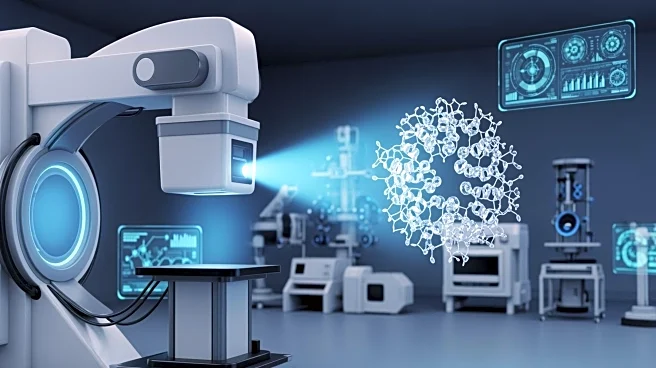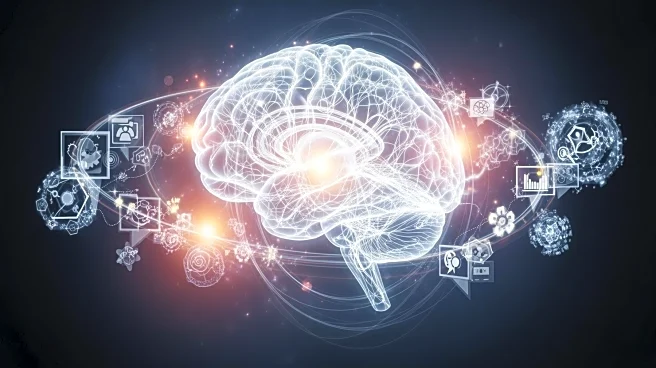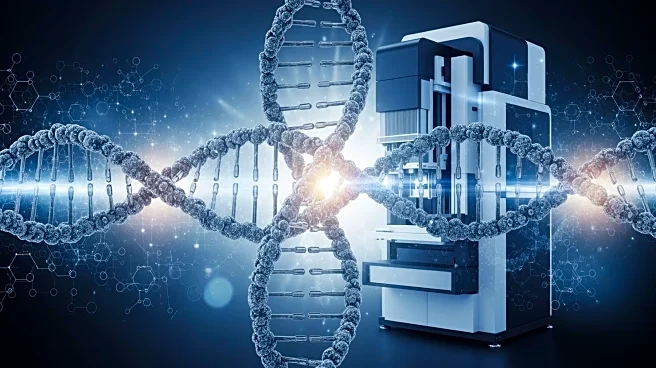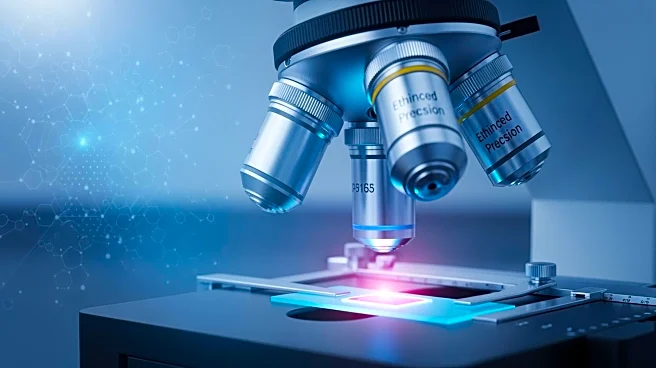What's Happening?
A recent study published in Nature investigates the retrieval of protein orientations using X-ray free-electron lasers (XFEL) for single particle imaging. The research utilizes simulations to model the ionization and explosion of proteins, aiming to capture
their structural variations. The study employs Monte Carlo and Molecular Dynamics simulations, focusing on proteins within a specific size range to ensure accurate results. The simulations are conducted using a Gaussian-shaped XFEL pulse, and the resulting ion trajectories are analyzed to determine their impact on virtual detectors. This approach allows researchers to trace ion paths and create explosion footprints, which are then used to assess protein orientation.
Why It's Important?
The study's findings have significant implications for the field of structural biology, particularly in understanding protein dynamics and interactions. By improving the accuracy of protein orientation retrieval, researchers can gain deeper insights into molecular structures, potentially advancing drug discovery and development. The use of XFEL technology in this context highlights its potential to revolutionize imaging techniques, offering more precise and detailed views of biological molecules. This could lead to breakthroughs in various scientific and medical fields, enhancing our ability to study complex biological systems.
What's Next?
Future research may focus on refining the simulation models and exploring additional applications of XFEL technology in structural biology. Researchers could investigate the use of different protein sizes and types to expand the scope of the study. Additionally, advancements in detector technology may improve the accuracy and efficiency of ion trajectory analysis, further enhancing the capabilities of XFEL-based imaging. Collaboration between scientific institutions and technology developers could drive innovation in this area, leading to new methodologies for studying molecular structures.
Beyond the Headlines
The ethical implications of using advanced imaging technologies in biological research should be considered, particularly in terms of data privacy and the potential for misuse. As imaging techniques become more sophisticated, researchers must ensure that their applications align with ethical standards and contribute positively to scientific progress. The long-term impact of these technologies on healthcare and environmental studies could be profound, necessitating careful consideration of their societal effects.













